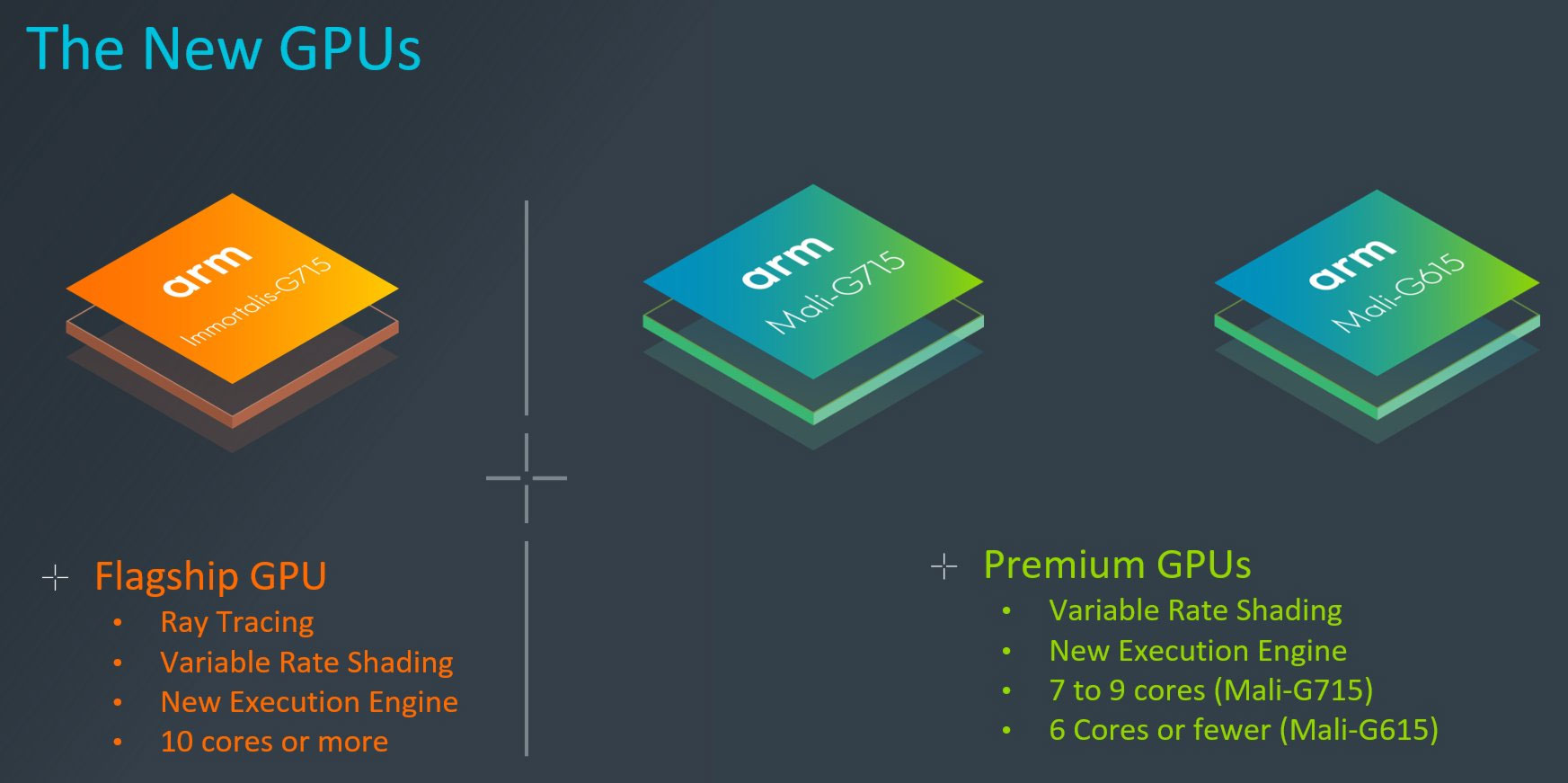Arm Immortalis Flagship GPU Includes Hardware-Based Ray Tracing
Moving beyond Mali
Arm has announced a new GPU family, targeting ultimate gaming experiences on next-gen flagship smartphones. The first of its new 'beyond-Mali' breed is the Immortalis-G715, and it comes with a sizable and realistically lit feather in its cap. It's "the first Arm GPU to offer hardware-based ray tracing support on mobile." Immortalis won't replace Mali graphics, though, and this is evidenced by Arm announcing two new Mali GPUs today, with many advanced graphical quality and performance features.
It's interesting to see Arm launching hardware accelerated ray tracing on mobile, at a time when even beefy desktop PCs with GPUs eating hundreds of watts require complementary technologies such as DLSS and FSR for the sake of frame rates and responsiveness. There are some technologies available for Arm GPUs that might help boost frame rates, though. Immortalis and new Mali GPUs both support Variable Rate Shading (VRS) and Adaptive Performance in Unity titles, for example. Additionally, the new GPUs from Arm are all said to offer 15% better rasterization performance and improved efficiency compared to the previous generation.
Arm hasn't said much about the ray tracing features and performance that users of devices packing the Immortalis-G715 might expect. We haven't seen any benchmarks, and demos didn't include frame rate counters. However, the new Immortalis GPU won't start to become available in flagship smartphones until early 2023, so there's a long time (in tech) before we hit ground truth.
A couple of demo videos helpfully show ray tracing features in action on the new GPU, showing before and after ray tracing comparisons for two scenes. Sure enough, the ray traced scenes are far richer in terms of lighting and shadows, but the 'original' scenes could have easily been improved with the many techniques game designers use for approximating lighting and shadow effects in games before Nvidia's RTX became a thing.
Whatever you might think of the demo, and though it is natural to be wary of mobile ray tracing performance claims, Arm asserts that, "Our partners are ready, the hardware is ready, and the developer ecosystem is (about to get) ready." That's confidence, but we shall see.
Interestingly, Arm says that the ray tracing hardware in the Immortalis GPU only uses 4% of the shader core area, while delivering more than a 300% performance improvement through the hardware acceleration. Arm also provided some key points for the tech behind Immortalis-G715, along with a block diagram.
Compared to the newest Mali GPUs, there's quite a lot in common. Both GPU families use the fourth Gen Valhalla architecture, offer VRS, Adaptive Performance, and a new Execution Engine, but the Immortalis GPU has the dedicated RT cores plus more traditional GPU cores available. Arm sums up the comparison in a simple diagram, below.
Mali is a hugely important GPU for the mobile industry, and Arm partners have shipped an astonishing eight billion Mali GPUs to date. The Immortalis-G715 will arrive in the new year with new smart device releases probably on show at the CES and MWC events. Arm is also keeping up the pressure on CPU design and refinement, and announced some second gen Armv9 CPUs today, alongside the above GPUs.
Get Tom's Hardware's best news and in-depth reviews, straight to your inbox.

Mark Tyson is a news editor at Tom's Hardware. He enjoys covering the full breadth of PC tech; from business and semiconductor design to products approaching the edge of reason.


